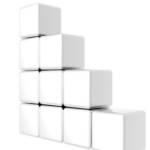Visual computing enables the combination of data and analytics for the provision of intelligent insights. Encoding and decoding with the help of digital signal processers and advanced co-processers, visual computing has benefitted various applications such as videos, photos, games, etc. Introduction to next-gen, advanced technologies is considerably affecting the global visual computing market as smartphones & other mobile devices have witnessed the adoption of image processing and computation. In addition, the advent of advanced APIs by vendors have proven beneficial to efficiently harness computational power of smartphones & other devices for visual computing.
Factors Propelling the Growth of Global Visual Computing Market Include
- Rising demand for improved video and image processing technologies
- Higher adoption of augmented reality and virtual reality in games owing to rising demand for improved graphics & user experience
- Increase in demand for advanced technologies among various applications
- Soaring utilisation of smart whiteboards within educational institutions
However, high installation costs and lack of skilled labour will remain as the restraints for the global visual computing market as per a study by Future Market Insights (FMI).
3-D Bladder Reconstruction Technique Using Advanced Computer Imaging Technology
A new technique, using advanced computer imaging technology, was recently developed by Stanford researchers that creates 3-D bladder reconstructions by utilising endoscope’s images. This invention has been necessitated owing to the difficulty in orientation of locating masses in the bladder’s blood vessel-lined walls by using cameras pinned to endoscopes. Owing to this fusion of engineering and medicine, doctors can now develop organ maps, prepare in advance for operations and detect cancer recurrences early. One of the advantages of this technique involves the elimination of purchasing new hardware or modifying doctor’s techniques significantly.
By applying advanced computer vision algorithms, this team reconstructed the internal appearance & shape of a bladder with the help of a video footage from a regular cystoscopy. Although this technique is developed for bladder reconstruction, it may be applied to some other hollow organs where endoscopy is usually performed by doctors including the colon or stomach. As per the researchers, future directions imply utilising the algorithm for monitoring cancer and diseases within the bladder for detection of subtle changes and its combination with other imaging technologies.
Intel and Mobileye to Enhance Automotive Industry with Visual Computing
Several players have set a firm foothold in the visual computing space since the recent past. One among them, Mobileye has been witnessed to actively participate in the visual computing space, automotive being the high priority on that agenda. Intel and Mobileye, recently made an announcement of an agreement wherein a tender will be commenced by Intel for all of the Mobileye’s issued & outstanding ordinary shared. Observing Mobileye’s announcements over the past, on the road to autonomous vehicles with car manufacturers, Intel focusses on benefitting itself from Mobileye’s actions and inclining towards automotive and cloud computing needed for several automotive tasks. Intel’s expertise in the fields of high performance general computing and RealSense technology is likely to be an interesting match for Mobileye’s portfolio.
Spectrum Development Workstation by Exxact Corporation
Another prominent market player, Exxact Corporation, made an announcement on 6th March 2017 about its planned production of Spectrum TXN005-0128N Development Workstation featuring the new Pascal-based NVIDIA Quadro GP100. This Workstation by Exxact will provide an enterprise-grade platform of visual computing for fulfilling the requirements of extreme render & compute capabilities for bigger datasets. The Spectrum Development Workstation is expected to enable designers, artists, researchers and engineers to explore deep learning, incorporate virtual reality into simulation & design workflows, reap benefits from photorealistic design, create expansive visual workspaces, efficiently run several compute & visualisation applications and unify HPC, rendering, simulation & design. Such innovations and advancements have magnified the demand for visual computing across the globe.
The information presented here is sourced from Future Market Insights latest report. A sample of this report is available upon request.
Author: Abhishek Budholiya is a tech blogger, digital marketing pro, and has contributed to numerous tech magazines. Currently, as a technology and digital branding consultant, he offers his analysis on the tech market research landscape. His forte is analysing the commercial viability of a new breakthrough, a trait you can see in his writing. When he is not ruminating about the tech world, he can be found playing table tennis or hanging out with his friends.








